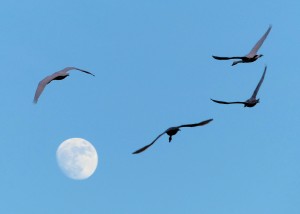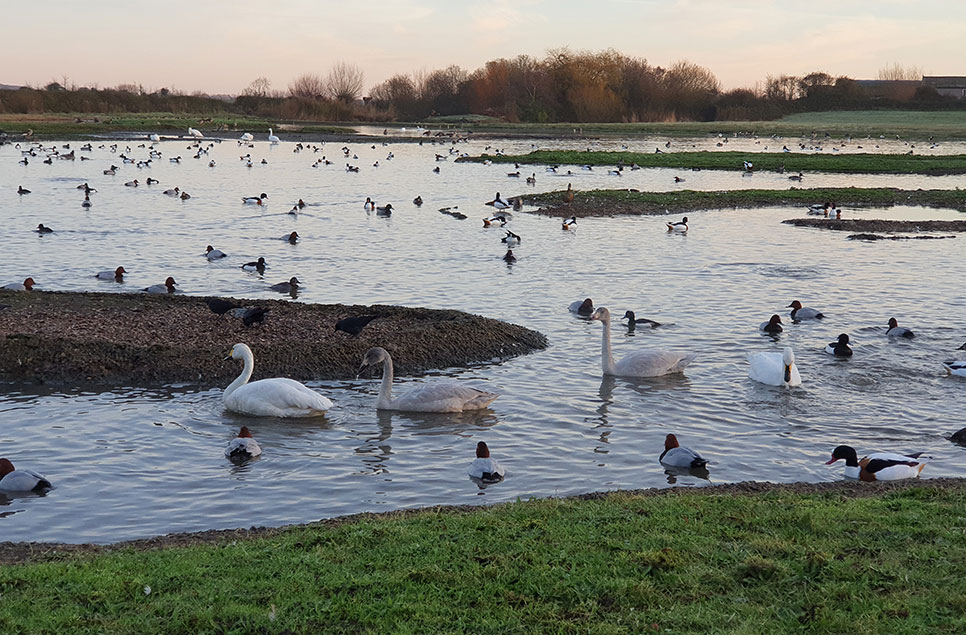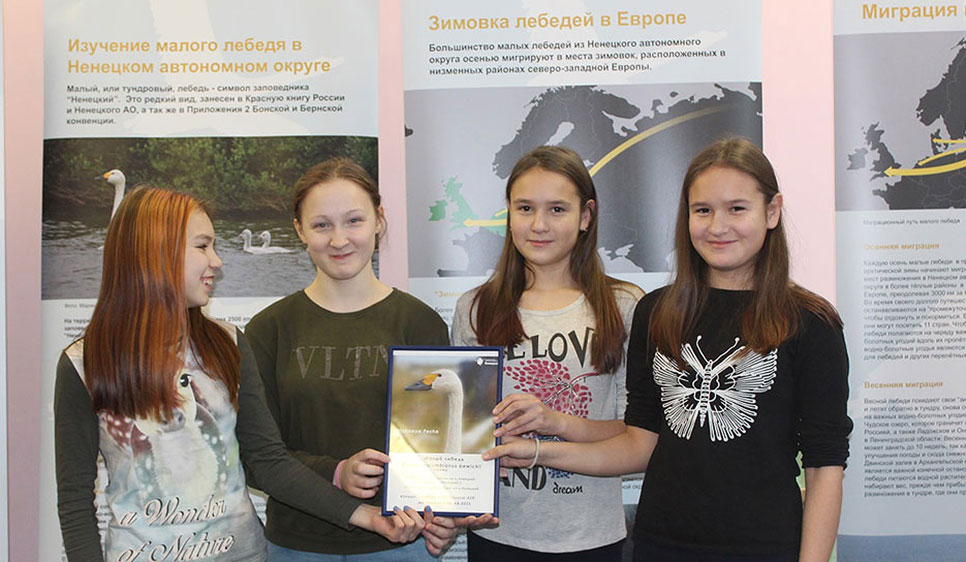Au Revoir!
Our last two remaining Bewick’s swans have finally left on spring migration, drawing to a close another eventful swan season! Whirls and Alik stayed at Slimbridge until 11 April, before natural urges to migrate and breed, triggered by the lengthening days, drove them to embark on a journey that will take them 2,500 miles to arctic Russia.
Whirls and Alik are a little behind the crowd - we have already heard news that some of our Slimbridge swans have reached Latvia!
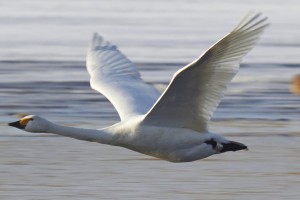
Last Wednesday, Visvaldis Steinbergs managed to photograph Bana (ringed 620) with mate Balsa (BDI) and Diamond (BVL) in flight over the Venta River near the Baltic coast. All three had left Slimbridge by 16 March. They face several more weeks of flying, interspersed with resting, before their arrival in Russia next month. It’s reassuring to see that they are making such good progress!
The swans have now been replaced by waving daffodils and scampering ducklings. It’s hard to believe that just two weeks ago the lake was alive with the ‘Bewick’s swan theatre’ which delivered a variety of daily performances from the moment the first swan, Humbugs, flew in on 27 October! After a relatively slow start, some north-easterly winds brought our first ‘swan-fall’ of the winter on 30 November when we saw the arrival of 60 new birds within a few days and, of course, some familiar faces.
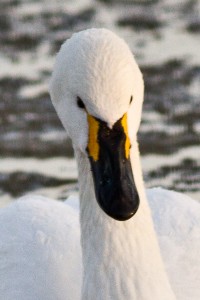
We were very pleased to see the return of Riddler who first visited Slimbridge as a cygnet with parents Apples and Oranges in 1991, making him a grand 21 years old! He certainly wasn’t the only ‘golden oldie’ with Whirls (22 years old) and Caper (24 years old) following close on his heels!
There were early indications that the Bewick’s had had a much improved breeding season with reasonable numbers of cygnets and large broods seen across the Netherlands in November.
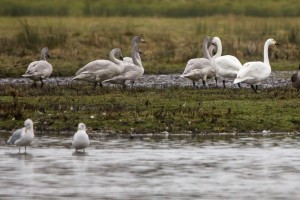
This was followed by the arrival of the largest Bewick’s swan family ever recorded at Slimbridge as Everton and Rovers flew in with their brood of six! Bewick’s swans usually lay between one and six eggs but generally only up to four (and more often one or two) hatch and survive to reach wintering sites in Northwest Europe.
A survey of 12,000 swans across Europe in December confirmed that the Bewick’s had bred more successfully than in recent years with 14% young recorded (J. Beekman & W. Tijsen). This was the highest proportion seen since 2001 when there was 14.5% young. Weather conditions on the breeding grounds in spring 2012 were reported to have been relatively good which would have had a great influence (A. Glotov).
This was all especially good news given that numbers in the Northwest European Bewick’s swan population have declined steeply since the mid-1990s, from 29,000 to less than 20,000 birds. The higher number of cygnets this year will hopefully boost their numbers. Reasons for the decline are not yet clear but may include a combination of factors, including weather and habitat changes, affecting the swans’ survival and productivity.
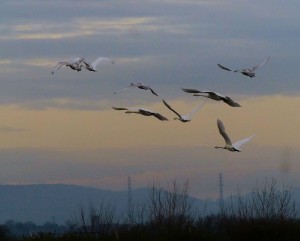
But we must end on a positive note! In May last year, the African-Eurasian Waterbird Agreement adopted an action plan designed to restore this declining population. WWT and international colleagues are now working with this plan and undertaking key actions across the swans’ range. Over the next year, we will be working hard to understand the causes of the decline, addressing known problems such as illegal shooting and flying collisions and ensuring that the crucial network of key sites, from Britain to Russia, is maintained to be used and enjoyed by the swans in safety for many years to come.
A huge thanks to all observers across the flyway for sending us information about the Bewick’s swans and bringing this blog to life with some fantastic photos! Please send any sightings of colour ringed swans to colourmarkedswans@wwt.org.uk We look forward to hearing about their progress throughout the year!
